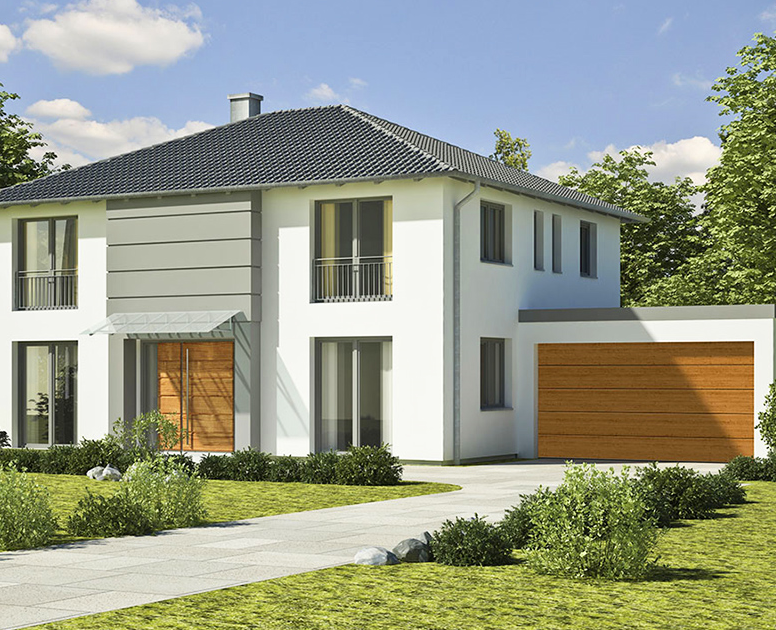Garage Door Insulation And Energy Performance
Garage door insulation plays a major role in the thermal performance of a building envelope, particularly in homes and facilities where the garage connects directly to conditioned spaces. Choosing insulated Garage Doors reduces conductive heat transfer through the door assembly, helping to stabilize indoor temperatures and lower heating and cooling loads. What are the mechanisms behind this improvement, and how does a properly insulated door affect year-round comfort and utility bills? Insulated Garage Doors provide a barrier to outdoor temperature fluctuations, decreasing the rate at which warm or cool air migrates into adjacent rooms. This is especially important in climates with extreme seasonal swings or in homes where the garage contains living areas, mechanical equipment or serves as a frequently used entry point. Besides thermal resistance, modern insulated Garage Doors often include sealed sections and weatherstripping that reduce drafts and air leakage. When these doors are paired with a well-sealed threshold and proper installation, the envelope benefits are amplified, helping furnaces and air conditioners operate less frequently and more efficiently. Over time, the reduction in HVAC runtime translates into lower energy consumption, reduced wear on systems and financial savings that offset the initial investment in higher-performance Garage Doors.
Thermal Properties And Materials
Insulation Types And R-Value
Different insulation materials produce different thermal resistances. Foam-injected cores, polystyrene panels and polyurethane are common choices in Garage Doors, each offering a range of R-values per inch. Higher R-values indicate better resistance to heat flow, and selecting a door with an appropriate R-value for the local climate directly affects seasonal energy performance. How does one balance R-value with cost and durability? The right choice depends on garage usage, local codes and budgetary considerations.
Door Construction And Thermal Breaks
Modern insulated Garage Doors often feature multi-layer construction with thermal breaks that interrupt conductive paths between interior and exterior metal skins. These design details reduce thermal bridging, where heat bypasses the insulating core through framing elements. Thermal breaks and continuous insulation improve overall assembly performance and make the door more effective at maintaining indoor comfort levels.
Air Sealing And Weather Resistance
Perimeter Seals And Thresholds
Effective sealing around the door perimeter matters as much as the core insulation. Quality weatherstripping at the sides, top and bottom of Garage Doors prevents drafts and minimizes infiltration. A properly installed threshold and bottom seal stop cold air seepage and block moisture from entering the garage. Combined with insulated door panels, these measures reduce heat loss and make the space more energy stable.
Joint Seams And Sectional Integrity
Sectional Garage Doors have seams between panels that require attention to detail in both manufacturing and installation. Overlapping joints, interlocking stiles, and compressible gaskets preserve continuous seals while allowing smooth operation. Maintaining sectional integrity prevents convective currents inside the garage that can otherwise increase energy demand for nearby conditioned zones.

Impact On HVAC Load And Energy Bills
Reduced Heating And Cooling Loads
Insulated Garage Doors lessen the heat exchange between the garage interior and the outside, which in turn reduces the load placed on heating and cooling systems. For homes where the garage is attached, the reduced thermal transfer can significantly lower the amount of energy required to maintain comfortable indoor temperatures. Would this reduction show up on the monthly utility bill? Yes — lower heating and cooling hours manifest as measurable savings, particularly in regions with long heating or cooling seasons.
Improved System Efficiency And Longevity
When HVAC systems run less frequently because heat gains and losses are moderated, system wear diminishes and operational efficiency remains higher for longer. Less cycling reduces stress on compressors and burners, contributing to longer useful life and fewer repairs. In this way, the energy benefits of insulated Garage Doors compound over both short and long time horizons.
Comfort, Noise, And Indoor Air Quality
Thermal Comfort And Zonal Stability
Insulated Garage Doors contribute to more predictable thermal zones within a home. Rooms adjacent to the garage experience fewer temperature swings, improving occupant comfort without overworking the thermostat. This stability is especially valuable for hobby spaces, workshops and home offices located above or next to the garage.
Noise Reduction And Environmental Separation
Beyond thermal benefits, insulated Garage Doors often reduce noise transfer from street traffic and external sources. A denser door core dampens sound and isolates the living space from external disturbances. Additionally, a sealed door minimizes the infiltration of dust, odors and pollutants, supporting better indoor air quality for occupants when garage usage involves vehicles, chemicals or dusty projects.
Installation Best Practices And Retrofit Options
Professional Installation And Sealing Details
Correct installation ensures that insulated Garage Doors perform as intended. Professional installers check for level tracks, uniform gaps, correctly seated seals and smooth operation — all factors that influence thermal performance. How much difference does quality installation make? A well-installed insulated door can perform substantially better than a higher-rated door installed incorrectly, emphasizing the importance of workmanship alongside product choice.
Retrofit Strategies For Existing Doors
Upgrading to insulated Garage Doors does not always require full replacement. Retrofitting existing doors with insulation kits, improved weatherstripping and threshold seals can provide incremental performance improvements. For owners seeking quick wins on energy efficiency, targeted retrofits of Garage Doors offer a cost-effective path to reduced energy loss while planning for a full replacement at a later date.
Selection Criteria And Cost Considerations
Choosing The Right Thermal Rating And Features
Selecting insulated Garage Doors involves matching R-value, material durability, and accessory features to project goals. Powder-coated steel, aluminum with thermal breaks, and composite skins each offer different long-term maintenance profiles. Considerations like wind load ratings, corrosion resistance and finish longevity help align product selection with site conditions and lifecycle expectations.
Lifecycle Costs And Return On Investment
Higher-performance insulated Garage Doors may carry larger upfront costs, but their lifecycle benefits — lower utility expenses, reduced HVAC maintenance and improved comfort — often justify the investment. Estimating payback periods and factoring in local energy prices can clarify the financial case for premium Garage Doors and inform procurement choices.
Energy Modeling And Performance Verification
Predictive Modeling For Expected Savings
Using simple energy modeling tools or consulting with building performance specialists can provide estimates of savings tied to insulated Garage Doors. Modeling accounts for climate, garage adjacency, existing insulation levels and HVAC efficiency to predict how much a door upgrade might reduce annual energy consumption. These projections help prioritize measures and shape retrofit plans.
Post-Installation Measurement And Validation
Validating claims through post-installation monitoring delivers confidence. Monitoring indoor temperature stability, HVAC runtime and utility consumption before and after replacing or insulating Garage Doors demonstrates actual impacts and supports evidence-based decisions for further upgrades.
Environmental And Policy Impacts
Contribution To Building Performance Goals
Insulated Garage Doors can contribute to broader energy efficiency targets for individual homes and multi-unit buildings. When aggregated across many units, improved Garage Doors reduce community energy demand and support local sustainability goals. Incentive programs and building codes increasingly recognize envelope improvements like insulated Garage Doors as viable pathways to meeting efficiency mandates.
Incentives, Rebates And Code Compliance
Many jurisdictions offer rebates or incentives for envelope upgrades and energy-efficient retrofits. Homeowners improving Garage Doors may find financial assistance through utility programs or local grants. Additionally, meeting or exceeding code minimums for thermal performance ensures compliance and may enhance resale value in markets that value energy performance.
Maintenance, Durability, And Long-Term Performance
Routine Inspection And Seal Replacement
To preserve the benefits of insulated Garage Doors, regular inspection of seals, rollers and panel condition is essential. Replacing worn weatherstripping and addressing damaged panels promptly keeps the assembly performing at design levels. Simple maintenance routines extend useful life and maintain efficiency.
Corrosion Protection And Material Selection
Material choices impact longevity, particularly in coastal or industrial environments. Selecting Garage Doors with corrosion-resistant finishes, stainless fasteners and durable cores reduces long-term maintenance and preserves thermal performance despite harsh conditions.
FAQ
Typical Energy Savings Achievable With Insulated Garage Doors
Typical energy savings vary by climate and garage adjacency, but many homeowners see noticeable reductions in HVAC runtime and monthly bills after upgrading to insulated Garage Doors, especially in colder climates or regions with large seasonal temperature swings.
Best Insulation Types For Different Climates
Polyurethane cores offer high R-values useful in cold climates, while polystyrene may be suitable for milder regions. Choosing the right insulation for Garage Doors depends on local weather patterns and the level of thermal protection required for adjacent living spaces.
Retrofit Options For Existing Garage Doors
For existing doors, adding insulation panels, improving weatherstripping and installing a sealed threshold can provide meaningful energy improvements without full replacement. These retrofit steps are cost-effective early measures for Garage Doors in average condition.
Maintenance Steps To Preserve Energy Performance
Regular cleaning of seals, prompt replacement of damaged weatherstrips and routine checks of rollers and tracks preserve the airtightness and insulation performance of Garage Doors, sustaining energy benefits over time.
Table of Contents
- Garage Door Insulation And Energy Performance
- Thermal Properties And Materials
- Air Sealing And Weather Resistance
- Impact On HVAC Load And Energy Bills
- Comfort, Noise, And Indoor Air Quality
- Installation Best Practices And Retrofit Options
- Selection Criteria And Cost Considerations
- Energy Modeling And Performance Verification
- Environmental And Policy Impacts
- Maintenance, Durability, And Long-Term Performance
- FAQ

